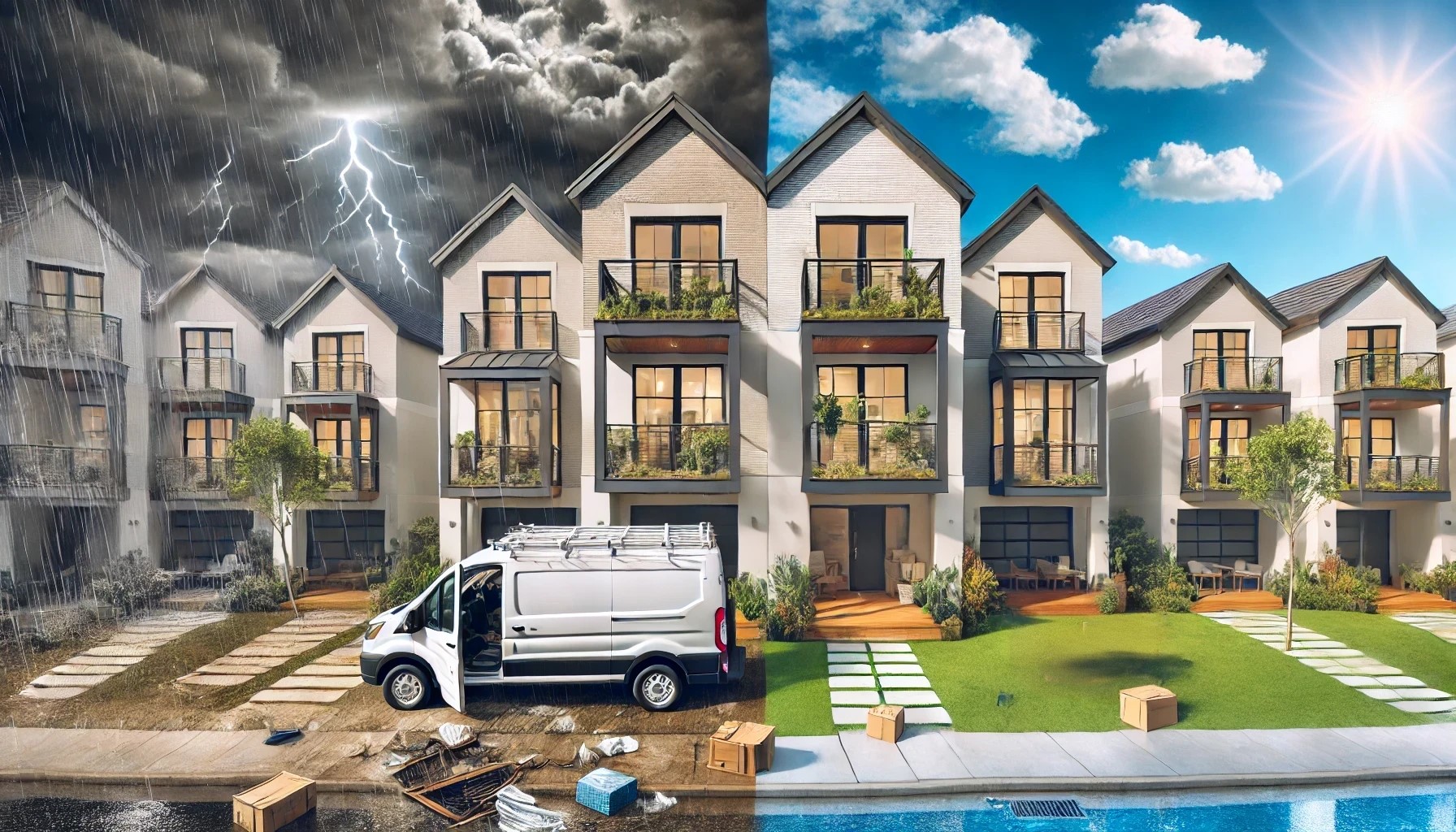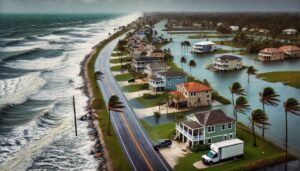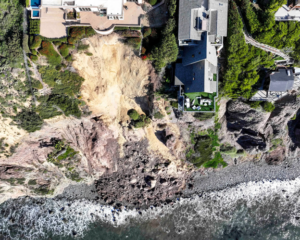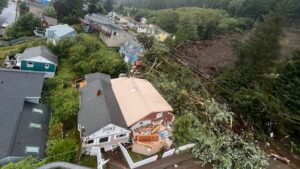Protecting Your Apartment or Townhome from Severe Weather = Enhancing Safety, Reducing Costs, and Securing Long-Term Value
Whether you own one or many units in a given multi-family building, as part of your real estate investing strategies which include understanding the investment risk factors and risk mitigation opportunities in addition to leveraging climate adaptation strategies, it’s important to have all the climate-driven financial property analysis in hand to make the property more resilient to increasingly extreme weather.
Why? Because resilience is about safeguarding your investment, reducing potential damage, and preserving its long-term value. These concerns apply to anyone who owns property, whether it’s a single-family home or a unit in a multi-family structure. Even renters benefit from living in a well-maintained and secure building.
This article explores why resilience matters, what it entails, and how you can take action to protect your home.
Are You Protecting Your Financial Assets?
Living in a condo, townhome, or apartment often comes with benefits: your homeowner’s association (HOA) fees or rent cover upkeep, landscaping, and major maintenance projects like roof replacements and exterior painting.
While these conveniences save you from the physical labor of property maintenance, they don’t absolve you from ensuring the overall property remains in good condition. For many investors and owners alike, these homes represent their most significant financial asset, making it essential to protect and enhance its value.
Homeowners in multi-family communities should actively advocate for regular upkeep and improvements that boost durability and longevity. Even if you rent, it’s in your best interest to ensure your building is safe and well-maintained.
Think of it like owning a car—you may not perform repairs yourself, but staying informed, scheduling routine maintenance, and budgeting for necessary expenses ensures your vehicle runs smoothly. Similarly, condo and townhome owners should do more than pay HOA dues and hope for the best, advocating for a property maintenance checklist that includes resilience projects can go a long way to starting the adaptation and resilience conversation.
Understanding Resilience
Before diving into action steps, let’s define resilience. The term has gained importance as property owners, emergency responders, insurers, and others confront the challenges of climate change, extreme weather events, and increasing storm severity.
A resilient home is designed or retrofitted to withstand these stresses. Building resilience involves identifying risks and making strategic investments to reduce potential damage and implementing the best climate adaptation strategies for the specific location. For prospective buyers, it may also mean choosing a property in a lower-risk area or built to higher safety standards.
Resilience measures can range from simple, cost-effective improvements—such as installing sump pumps to prevent basement flooding—to larger-scale projects, including upgrading siding and roofing for fire resistance, enhancing drainage systems to mitigate flooding, or improving structural integrity against high winds.
Working Through Your HOA Board
For those living in HOA-governed communities, making resilience improvements isn’t a solo effort. Instead, these changes must be implemented at the community level.
Your HOA board is responsible for hiring contractors and overseeing property maintenance. However, board members are typically volunteers without professional experience in property management, and they may not always prioritize long-term resilience improvements, especially if they fear raising dues to fund climate adaptation strategies.
Many states require HOAs to hire professional management companies, but the effectiveness of these firms varies. Ultimately, the board sets policies and directs the management company’s actions, meaning oversight and proactive governance are crucial.
Here are key considerations:
- Ensure diligent oversight: Don’t assume the board or management company is prioritizing long-term resilience. Regularly review meeting minutes and financial reports.
- Monitor reserve fund allocations: These funds cover major maintenance projects, such as roof and window replacements. Proper funding and planning are essential to avoid unexpected, costly special assessments.
- Advocate for proactive maintenance: Neglecting small issues—like leaks or minor structural damage—can lead to expensive repairs down the line.
- Encourage resilience planning: Adding resilience measures, that include climate adaptation strategies, to long-term maintenance plans can improve safety and potentially lower costs, such as insurance premiums.
Practical Steps for HOA Owners
If you own a condo or townhome, here’s how you can take an active role in promoting resilience in your community:
- Attend HOA board meetings to stay informed and advocate for resilience initiatives.
- Request virtual attendance options or review meeting minutes if you can’t attend in person.
- Consider joining the board if you have the time and interest in influencing property decisions.
- Ensure professional inspections are conducted regularly to assess and address vulnerabilities in roofing, siding, foundations, and other structural elements.
- Ask about disaster preparedness efforts, including protections against hurricanes, floods, wildfires, and earthquakes.
- Encourage resilience funding within the HOA’s reserve fund to integrate proactive measures without unnecessary fee increases.
- If you’re a renter, engage with your landlord to ensure they communicate with the HOA about resilience concerns.
Making Resilience a Priority
Condos, townhomes, and apartments require the same level of protection from extreme weather as single-family homes and can benefit from many of the same climate adaptation strategies. While multi-family property owners must work collectively through their HOA boards, resilience remains a shared responsibility.
Board members, like you, have a vested interest in protecting their investments. By prioritizing resilience, you help safeguard your home, reduce future repair costs, and enhance your community’s long-term value.
Want to Learn More? Sign-up for a free account to get started browsing properties or visit our property intelligence page to see how we evaluate properties.





